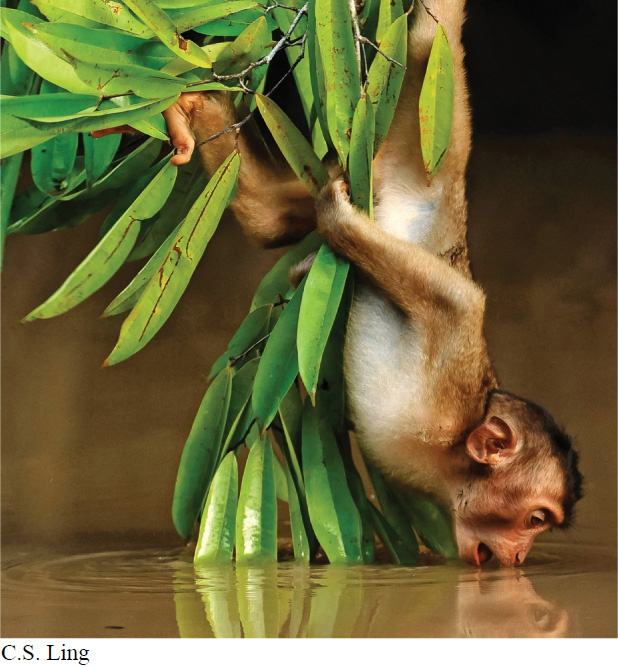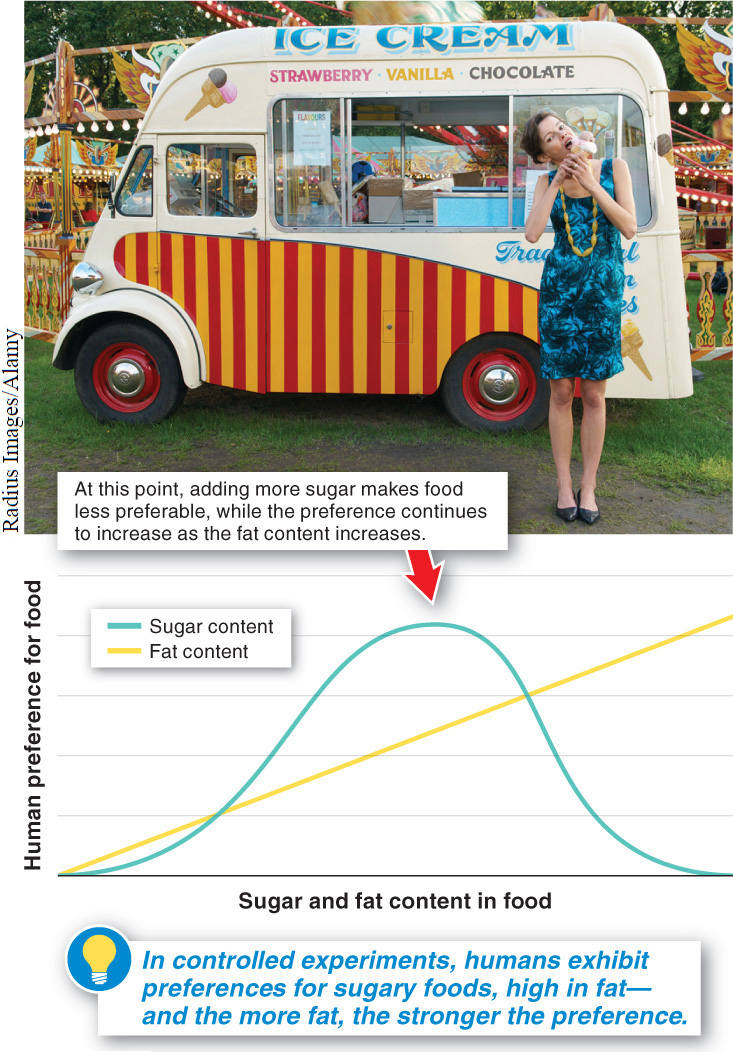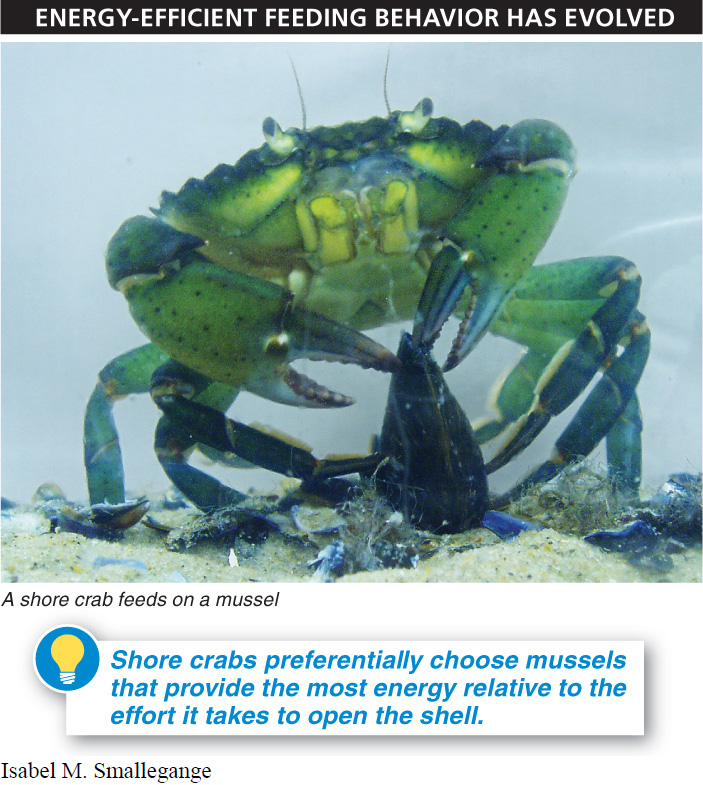
What are your favorite things to eat? Perhaps donuts or hot fudge sundaes top your list. Or maybe bananas, or cheeseburgers and french fries. One thing is almost certain about the food preferences of any human: the list is filled with calorie-

In controlled studies, humans demonstrate a clear and consistent preference for sweet and fatty foods. Specifically, when people are presented with different mixtures, their preferences increase as the sugar concentration in the food increases—

Watch birds in a field and you’ll see that they, too, have preferences. A starling, for example, does not eat everything in its path. Rather, it walks through the grass, probing the ground and only occasionally picking up something to eat, such as a beetle larva. Shore crabs, too, have definite preferences. When presented with mussels of different sizes, shore crabs prefer the mussels that provide the greatest amount of energy relative to the amount of energy a crab must expend to open the mussel. The largest mussels take too long to open and so are less preferred; the smallest mussels are easily opened but don’t provide enough caloric content to make the effort worthwhile (FIGURE 9-3). Thus, the research shows, shore crabs prefer medium-

Humans, starlings, shore crabs, and all other animals have taste preferences for the same reason: animals (including humans), unlike plants, cannot create their own food, so they must consume materials from which they can extract the most energy and acquire essential nutrients. If they don’t, they die. We may believe that some things simply taste good while others do not, but these preferences are a direct result of an interaction between the materials we eat and molecules within our taste buds. And those molecules are produced by a large number of genes that have been shaped by natural selection.
367
Taste preferences directly influence the evolutionary fitness of organisms; the feeding choices of animals affect the number of offspring they can produce. As a consequence, natural selection can shape feeding behaviors just as it can bring about changes in physical structures.
Before we continue, let’s define exactly what we mean by “behavior.” Behavior encompasses any and all of the actions performed by an organism, often in response to its environment or to the actions of another organism. Feeding behavior is only one of many behaviors influenced by natural selection.
The scope of animal behavior is vast and varied. Even a brief listing of well-
- Conflict, aggression, and territoriality
- Cooperation, alliance-
building, and sociality - Competing for food and avoiding predators
- Migration and navigation
- Behavioral control of body temperature
- Courtship and mate choice
- Pair bonding and fidelity
- Breeding and parental behavior
- Communication
- Learning and tool use
In Chapter 8, we learned about the evolutionary origins of many physical traits and the general process by which natural selection can lead to the evolution of organisms adapted to their environments. Similarly, in this chapter, we explore the evolution of behavioral traits. We’ll concentrate on three broad areas of animal behavior—
Our approach to the study of evolution and behavior parallels our approach to the study of the evolution of non-
368
TAKE-HOME MESSAGE 9.1
Behavior encompasses any and all of the actions performed by an organism. When a heritable trait increases an individual’s reproductive success relative to that of other individuals, that trait tends to increase in frequency in the population. Behavior is a part of an organism’s phenotype, and as such it can be produced and shaped by natural selection.
List two examples of behaviors that are influenced by natural selection.
The textbook lists taste preference and feeding behavior. There are many other examples because natural selection can shape behaviors just as it shapes changes in physical traits.